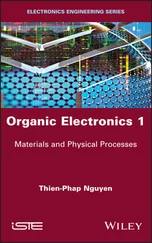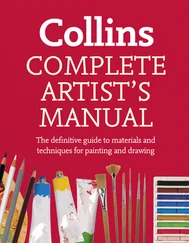1 Cover
2 Title Page Organic Electronics for Electrochromic Materials and Devices Hong Meng
3 Copyright Author Prof. Hong Meng Peking University Shenzhen Graduate School Building G 306 Lishui Road, Nanshan Disctrict 518055 Shenzhen China Cover Design : Wiley Cover Image : © Andrew Goodsell/Shutterstock All books published by Wiley‐VCH are carefully produced. Nevertheless, authors, editors, and publisher do not warrant the information contained in these books, including this book, to be free of errors. Readers are advised to keep in mind that statements, data, illustrations, procedural details or other items may inadvertently be inaccurate. Library of Congress Card No.: applied for British Library Cataloguing‐in‐Publication Data A catalogue record for this book is available from the British Library. Bibliographic information published by the Deutsche Nationalbibliothek The Deutsche Nationalbibliothek lists this publication in the Deutsche Nationalbibliografie; detailed bibliographic data are available on the Internet at < http://dnb.d-nb.de >. © 2021 WILEY-VCH GmbH, Boschstr. 12, 69469 Weinheim, Germany All rights reserved (including those of translation into other languages). No part of this book may be reproduced in any form – by photoprinting, microfilm, or any other means – nor transmitted or translated into a machine language without written permission from the publishers. Registered names, trademarks, etc. used in this book, even when not specifically marked as such, are not to be considered unprotected by law. Print ISBN: 978‐3‐527‐34871‐8 ePDF ISBN: 978‐3‐527‐83061‐9 ePub ISBN: 978‐3‐527‐83062‐6 oBook ISBN: 978‐3‐527‐83063‐3
4 Preface Preface In recent years, with the development of artificial intelligence, more and more industries strive to be “smart.” As a new generation of display technology, organic electrochromic (OEC) devices offer numerous advantages such as flexibility, full colors, wide origins of materials, fast switching time, low driving voltage, and simple configuration. In addition, these devices possess “smart” characteristics of multi‐stimulation and multi‐response. Therefore, the OEC industry is emerging as a potential display competitor in the field of electronic information. This book covers major topics related to the phenomenon of electrochromism, including the history of organic electrochromism, fundamental principles, different types of electrochromic materials, development of device structures, multifunctional devices, their characterizations and applications, and future prospects of OEC technology. It also spotlights recent research progress reported by academic institutes and enterprises, and discusses the existing challenges in further development of this area. This book provides a comprehensive review of OEC materials and devices, and can be used as a teaching reference for undergraduate and graduate students as well as teachers in the fields of organic chemistry and polymer science etc. Also, this book can be adopted as a comprehensive reference for researchers engaged in the development of OEC technology enterprise in the field of electrochromism. Hong Meng Shenzhen, PR China 11 November 2020
5 About the Author About the Author Prof. Dr. Hong Meng obtained his BS in Chemistry at Sichuan University in 1988 and MS degree in Organic Chemistry from Peking University in 1995. He then studied Polymer Science and Engineering and acquired his second MS degree from the National University of Singapore in 1997. After working at the Institute of Materials Science and Engineering (IMRE) in Singapore for two years, he went to the United States in 1999 and completed his PhD under the supervision of Prof. Fred Wudl at the University of California, Los Angeles (UCLA), in 2002. Prof. Dr. Meng worked as a research consultant at Bell Labs, Lucent Technologies, with Dr. Zhenan Bao for one year. He then joined DuPont Experimental Station, Central Research and Development, as a senior research chemist in 2002. In 2012, he moved back to China and worked as the CEO of a laser printing industry at Leputai Technology Company. In 2014, he joined the School of Advanced Materials at Peking University, Shenzhen as a chair professor. He has been engaged in the research and development of solid‐state organic synthesis, organic semiconductor device engineering, organic electronics, and other relevant fields, especially organic light‐emitting diodes, organic electrochromics, organic thin-film transistors, organic conductive polymers, and nanotechnology. He has published more than 200 articles in internationally renowned journals, participated in the writing of three book chapters and co‐edited two books in the field of organic optoelectronic technology. He has obtained more than 150 patents for inventions in the United States and China, among which, several patented products have been commercialized.
6 1 Introduction1.1 General Introduction 1.2 The History of Electrochromic Materials 1.3 The Key Parameters of Electrochromism 1.4 Conclusion References
7 2 Advances in Polymer Electrolytes for Electrochromic Applications2.1 Introduction 2.2 Requirements of Polymer Electrolytes in Electrochromic Applications 2.3 Types of Polymer Electrolytes 2.4 Conclusion and Future Outlook References
8 3 Electrochromic Small Molecules3.1 Background of Small Molecule Electrochromic 3.2 Technology Development of Small Molecule Electrochromic Materials 3.3 Violene–Cyanine Hybrids (AIE PL OEC) 3.4 Terephthalate Derivatives (Multicolor OEC) 3.5 Isophthalate Derivatives 3.6 Methyl Ketone Derivatives 3.7 Diphenylacetylenes 3.8 Fluoran Dye Derivatives 3.9 PH‐Responsive Molecule Derivatives 3.10 TPA Dye Derivatives 3.11 Hydrocarbon Derivatives‐NIR‐OEC 3.12 Conclusions and Perspective References
9 4 Viologen OEC4.1 The Introduction of OEC and Viologen 4.2 Different Structures of Viologen‐Based Electrochromic Materials 4.3 Viologen Electrochromic Device 4.4 Companies Operating in the Field of Viologen Electrochromism 4.5 Conclusion References
10 5 Metallohexacyanates5.1 Background 5.2 Technology Development of PB 5.3 Crystal Structure 5.4 Electrochromic Mechanism 5.5 Synthesis 5.6 Electrochromic Devices (ECDs) 5.7 Nanocomposites 5.8 PB Analogs 5.9 Multifunctional Applications References
11 6 Electrochromic Conjugated Polymers (ECPs)6.1 Introduction 6.2 Thiophene‐Based Conjugated Electrochromic Polymers 6.3 Polypyrroles‐Based Conjugated Electrochromic Polymers 6.4 Polycarbazole‐Based Conjugated Electrochromic Polymers References
12 7 TA‐Based Electrochromic Polyimides and Polyamides7.1 Introduction 7.2 Development of TA‐Based Electrochromic Polyimides and Polyamides 7.3 Conclusions References
13 8 Metallo‐Supermolecular Polymers8.1 Introduction 8.2 Single Metallic System 8.3 Hetero‐Metallic System 8.4 The Fabrication Method of Metallopolymer Film 8.5 Conclusion References
14 9 Metal‐Organic Framework (MOF)‐ and Covalent Organic Framework (COF)‐Based Electrochromism (EC)9.1 Introduction 9.2 Current Studies in EC MOFs 9.3 Current Studies in EC COFs 9.4 Conclusion and Prospect References
15 10 Nanostructure‐Based Electrochromism10.1 Introduction 10.2 Current Studies of Nanostructure in Electrochromism 10.3 Conclusion and Prospect References
16 11 Organic Electroluminochromic Materials11.1 Introduction 11.2 Conventional Mechanisms of Electroluminochromism 11.3 Electroluminochromic Performance Parameters 11.4 Classical Materials 11.5 Future Perspectives and Conclusion References
17 12 Organic Photoelectrochromic Devices12.1 Introduction 12.2 Structure Design of PECDs 12.3 Future Perspectives and Conclusion References
18 13 Application of OEC Devices 13.1 Smart Window 13.2 Dimmable Rearview Mirror 13.3 Sensors 13.4 The Application of Electrochromic Device in Display 13.5 Other Applications of OEC References
Читать дальше












